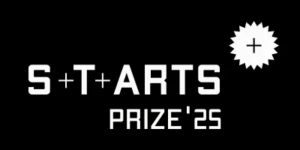2025 S+T+ARTS Prize Jury
All submissions are judged by a jury to decide on the two prize-winning projects and up to ten honorary mentions.
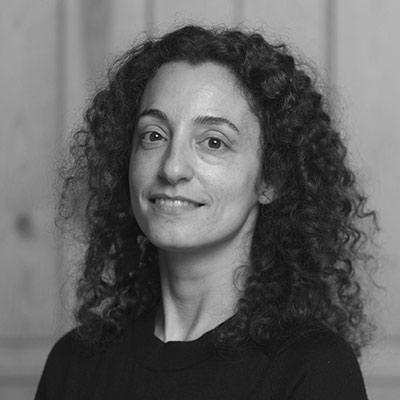
Irini Papadimitriou (UK) is a curator and cultural manager, whose practice draws on interdisciplinary and critical discourse to explore the impact of technology in society and culture, and the role of art in these conversations. Currently Director of Exhibitions at Diriyah Art Futures, she was previously Creative Director at FutureEverything, Digital Programmes Manager at the V&A and Head of New Media Arts Development at Watermans. In 2023 she was the Artistic Director for Busan Biennale’s Sea Art Festival. Recently curated exhibitions include: AI: Who’s Looking After Me? Science Gallery London; Flickering Shores, Sea Imaginaries, Sea Art Festival 2023, Busan; FutureFantastic, Bangalore; Plásmata: Bodies, Dreams, and Data and You and AI: Through the Algorithmic Lens, Onassis, Athens; [Digital] Transmissions, Jordan National Gallery of Fine Arts, Amman; Artificially Intelligent, V&A. Irini has served as a jury member for Prix Ars Electronica, Lumen Prize, EU STARTS and ACM Siggraph.
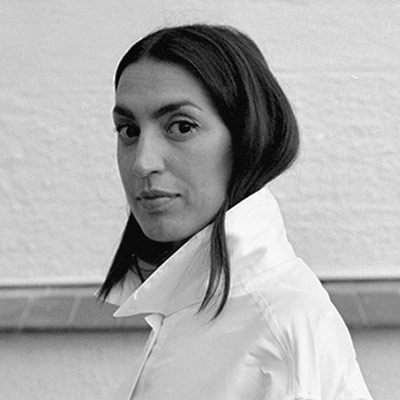
Veronica D’Souza (DK) is an award-winning social entrepreneur, multidisciplinary artist, speaker, and independent advisor working towards a regenerative, inclusive, and aspirational future. She is the founder of CARCEL, a pioneering fashion label that operated on principles of social impact and sustainability. CARCEL’s garments, crafted by women in prison in Thailand and Peru using 100% natural materials, provided valuable skills, paid employment, and opportunities for a better future. The brand’s commitment to ethical production and design earned it global recognition, including opening Copenhagen Fashion Week in 2020 and coverage in The New York Times, Vogue, Forbes, and i-D.
Veronica is also the co-founder of Ruby Cup, a social enterprise offering sustainable menstrual products to women and girls in East Africa and GEIST Agency, an independent consultancy, where Veronica collaborates with organizations to drive impactful strategies, communications, and business development for positive societal change. She is a Board Member of The Danish Design Council, Global Shaper alumni (World Economic Forum), and Board Member of The Soulfuls, and a jury member for the INDEX Award. Veronica is also a Humanity In Action Senior Fellow, and a UWC Adriatic alumnus and recipient of several awards such as EY Social Entrepreneur, Creative Business Cup, Elle Style Awards CSR Prize, Wessel and Wett Design Award.
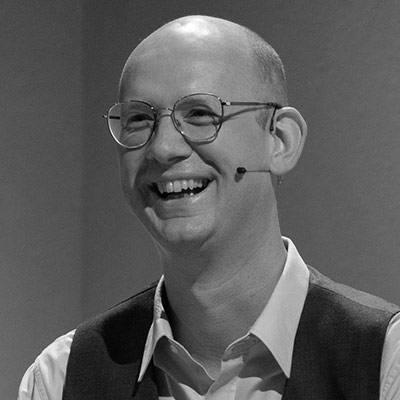
Thomas Gegenhuber (AT) is currently responsible for the topics innovation & economic affairs in the City government of Linz. He is also a professor on leave at the Linz Institute for Transformative Change at JKU Linz and a visiting professor Leuphana University Lüneburg. His professional and academic interests include topics such as (open) social innovation, digital and sustainable transformation, and new forms of organizing.

Francesca Bria (IT) is an innovation economist working at the intersection of technology, geopolitics, and society. She is Honorary Professor at UCL’s Institute for Innovation and Public Purpose and a Senior Fellow at Stiftung Mercator in Berlin, where she leads the EuroStack Initiative on Europe’s digital sovereignty (euro-stack.info).
She advises the European Commission and chairs the New European Bauhaus Expert Group to help advance Europe’s Green Deal. She is also a member of Spain’s International Council on Artificial Intelligence. Previously, she served as President of Italy’s National Innovation Fund (CDP Venture Capital), was a board member of RAI, and held the role of Chief Digital Technology and Innovation Officer for the City of Barcelona (2015–2019), where she led the city’s digital transformation and participatory democracy initiatives.
Francesca founded the EU’s flagship DECODE project on data sovereignty and co-founded the United Nations Cities Coalition for Digital Rights. She has advised governments, the UN, and international organizations on innovation policy and its socio-economic and environmental impacts.
She has been recognized by Forbes, Apolitical, Politico, and Frankfurter Allgemeine Zeitung, and was awarded the title of Commander of the Order of Merit of the Italian Republic.
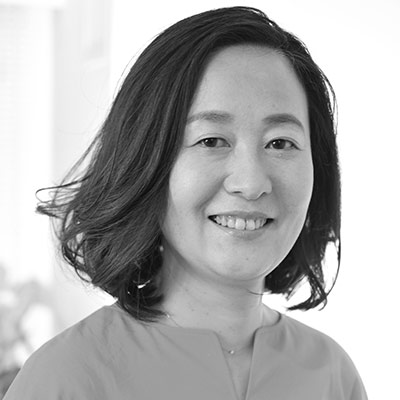
Asako Tomura (JP) is General Manager of the Content Technology & Alliance Group within HQ Technology Strategy Division, Sony Group Corporation. With master’s degrees in chemistry and media arts, she began her career in advertising at Shiseido before joining Sony Corporation in 2001. At Sony Pictures Entertainment (Japan) and Aniplex, Inc., she led the launch of digital content distribution businesses for film and animation. She later served as Head of CSR Innovation at Sony headquarters, where she collaborated with the UNs and international NGOs on technology-driven social initiatives. Since 2016, her current role has focused on advanced content development, entertainment technology and sustainability strategies.
In addition to her corporate role, she has actively contributed to the media arts community, serving as the planning director for Ars Electronica 2021 Garden TOKYO and as a jury member for the EU’s STARTS Prize 2022 and SIGGRAPH Asia 2024 Art Gallery. She is also an advisor for the Japan Agency for Cultural Affairs‘ Project to Support Emerging Media Arts Creators (2017-2025) and a visiting researcher at the University of Tokyo Interfaculty Initiative in Information Studies since 2021.
2025 S+T+ARTS Prize Advisors
The advisors are renowned international consultants with expertise in this field. They recommend projects and encourage a wide range of potential participants to submit proposals. In addition, they ensure a balance in terms of gender and geographical origin of the participants.
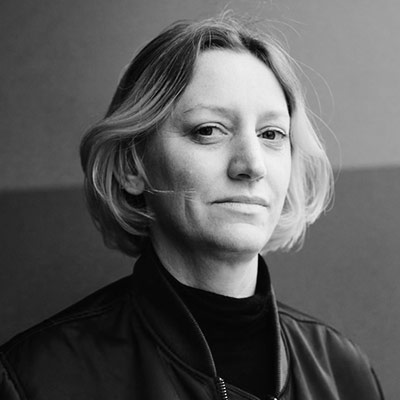
Rosario Talevi (IT/AR), born in Buenos Aires in 1983, is a Berlin-based architect, curator, editor and educator interested in critical spatial practice (Rendell) and transformative pedagogies. Her work advances architecture as a form of agency – in its transformative sense and in its capacity for acting otherwise (Schneider) and as a form of care – one that provides the political stakes to repair our broken world (Tronto). Rosario is a graduate of the School of Architecture, Design & Urbanism at the University of Buenos Aires and has held teaching and research positions at various universities (Universidad de Buenos Aires, Technische Universität Berlin, Universität der Künste Berlin, Freie Universität Bolzano). She was a visiting professor for Social Design (2021-22) at the University of Fine Arts (HFBK) in Hamburg. She is a founding member of Floating University and Soft Agency. In 2022 she was a fellow at the Thomas Mann House in Los Angeles, California. She speaks about her practice internationally, in both institutional and non-institutional contexts, and her work and writing has been widely published. Single mother of Florentina Talevi (born 2003).
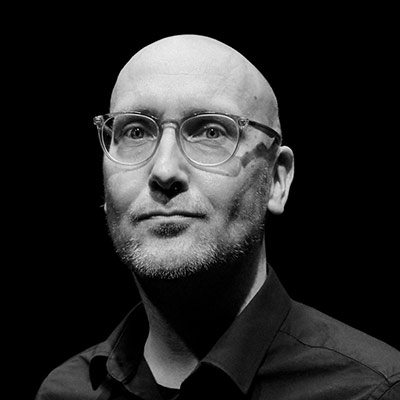
Jussi Parikka (FI) is Professor in Digital Aesthetics and Culture at Aarhus University, Denmark as well as (visiting) research professor at University of Southampton. Founding co-director of the Environmental Media and Aesthetics research program at Aarhus University, he has worked extensively on environmental media, history of technology and science, as well as on various interdisciplinary topics , not least on media archaeology. Some of his books include Insect Media: An Archaeology of Animals and Technology (2010), A Geology of Media (2015), and Operational Images (2023). He has co-authored such books as The Lab Book (2022) and Living Surfaces (2023) as well as worked in various editorial roles. Over the past years Parikka has been active as a curator too, including collaborations such as the Weather Engines and Climate Engines exhibitions (with Daphne Dragona), as well as serving on the curatorial team of Helsinki Biennial 2023, as well as transmediale 2023. He is currently a board member of the transmediale festival in digital art and culture as well as serving on the advisory board of the LG & Guggenheim initiative on art and technology. Parikka’s books have been translated into 12 languages.
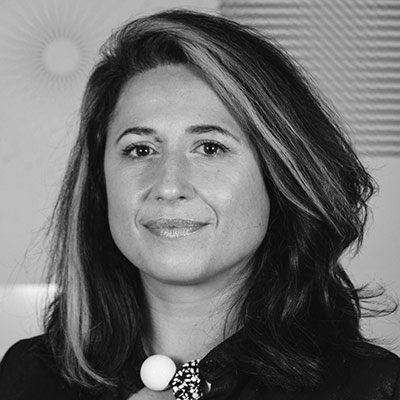
Starting her career in Sydney as a banker, Deborah Rey-Burns (UK) later pivoted in London to become a cultural entrepreneur and the founder of Propela, an innovative speaking agency globally known for its commitment to frontier thinking. With a mission to bridge the gap between the creative sector and the business world, Deborah established the British agency over a decade ago. Propela’s roster features a selection of international innovators who have been keynote speakers at major conferences, Fortune 500 companies, and leading brands. Among Propela’s clients are Neil Harbisson, the world’s first Cyborg, along with Oscar-nominated set designers Katie Spencers and Sarah Greenwood (Barbie), artist and technologist James Bridle, Designer Dr. Nelly Ben Hayoun, Speculative Architect Liam Young, Bas Van Abel, the founder of Fairphone, a world leader in sustainability and ethics, and Dr. Sian Proctor, the world’s first black female spaceship pilot. Beyond Propela, Deborah has curated programs for institutions such as the Victoria & Albert Museum and the Design Council’s COP26 conference, along with organisations such as Google, Airbnb, and Spotify. Furthermore, she has founded ReDesign Business and The Future Of_, two conference brands dedicated to showcasing art, creativity, innovation, and business.
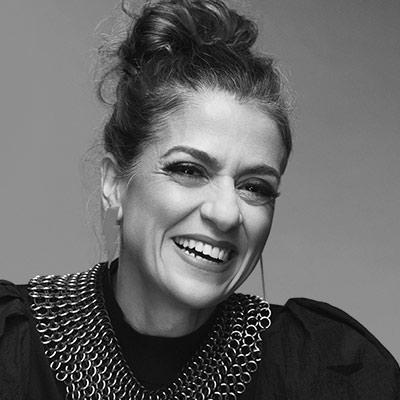
Known as the ‚Abogamer‘, Micaela Mantegna (AR) is a video game lawyer and activist who is internationally renowned for her expertise in digital ethics, extended reality (XR) policy, and the complex relationship between artificial intelligence, creativity, and copyright law. In 2022, Micaela was chosen for the prestigious TED Fellowship, and her TED talk on the metaverse earned 1.5M+ views globally. Currently she is an affiliate at the Berkman Klein Center at Harvard University, while also serving on Chatham House’s Responsible AI Taskforce, the World Economic Forum’s Metaverse Council, and the Scientific Committee of UAMetaverse Chair, positions that highlight Micaela as a global thought leader in Generative AI, ethics, videogames and metaverse policy. As a keynote speaker, she has presented across the globe in conferences like GDC, TED, GamesBeat Summit, Ada Lovelace Festival, Vancouver Biennale, More Than Just a Game, RightsCon, DLD, Internet Freedom Festival, and many more, in over 28 countries. Author of „ARTficial: creativity, AI and copyright“ (2022) and the upcoming „Braindancing in the Metaverse: a capitalism of cognitive surveillance“ (2024), her work explores in depth the implications of digital capitalism, at the intersections of intellectual property, AI, art, and ethics. She earned the 2017 Google Policy Fellowship for her work creating an algorithmic governance framework. Her work and insights have been featured in outlets like The Verge, WIRED, and Le Monde. Micaela curates the popular Substack newsletter “This week in the #Metaverse”, offering weekly insights into the latest trends and policy developments on the metaverse, AI, neurotech, crypto and gaming.
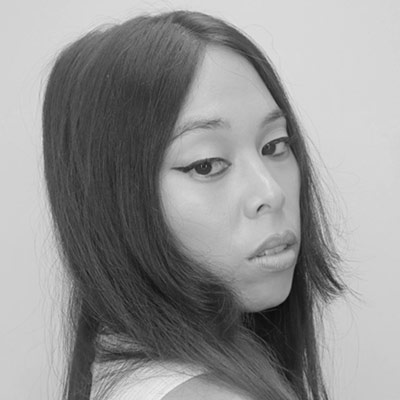
Alex Quicho (CA/PH) is a theorist and research director in London. Her practice incorporates critical writing, performative lectures, and moving image, with a focus on how emerging technologies warp social reality and vice-versa. Her work has been featured in Wired, Frieze, Dazed, Vogue, Spike, The Face, MIT Technology Review, and more. Alex collaborates with arts institutions including Singapore Art Museum, Power Station of Art Shanghai, Julia Stoschek Collection, Fondation Pernod-Ricard, Rennie Museum, and Nationalgalerie Berlin. She teaches narrative theory for MA Narrative Environments at Central Saint Martins, and studied Critical Writing at the Royal College of Art.

Yun-Cheng Chen (TW) (Lucky) is an artivist and strategist specializing in creative institutionalization and digital innovation, reshaping cultural and nonprofit organizations with strategic foresight. He led the transformation of a struggling nonprofit dance company into a resilient, 17-member performing arts cooperative within six months. Additionally, he is deeply engaged in Guishan Island’s relocation controversy, collaborating with local communities and the whale-watching industry to integrate participatory democracy, SDGs governance, and blockchain technology in building a marine cultural database and the digital twin of Guishan Island. Through this initiative, he aims to foster non-anthropocentric, regenerative economies, facilitating sustainable transitions in remote communities through commoning. As a connector across industry, government, academia, and communities/DAOs, he currently serves as the Strategy Director of Les Petites Choses Production and Seabelongings, while actively contributing to g0v. His expertise in performing arts, deliberative democracy, regional revitalization, and digital transformation has earned him key roles in leading impactful projects since 2016. Many of these projects have received international awards and have been showcased in Singapore, France, Spain, Greece, Portugal, Germany, the UK, and Japan.
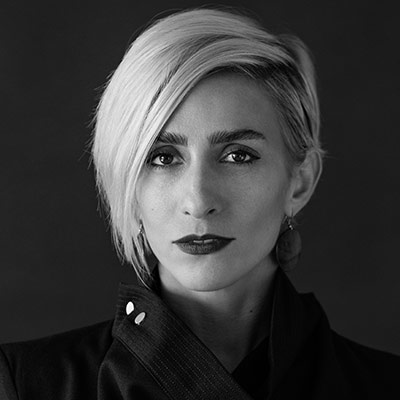
Behnaz Farahi (IR/US) is an award-winning designer and critical maker working at the intersection of fashion, architecture and interactive design. Currently, she is an Assistant Professor at the MIT Media Lab where she leads the Critical Matter research group. Trained as an architect, Farahi’s work focuses on fostering empathetic relationships between the human body and its surrounding environment. For this she draws upon emerging technologies and morphological and behavioral principles inspired by natural systems. Her projects address critical issues such as feminism, emotion, bodily perception, and social interaction. She specializes in computational design, interactive technologies, additive manufacturing, and digital fabrication technologies. Farahi is the recipient of numerous awards, including the Cooper Hewitt Smithsonian Design Museum Digital Design Award, Innovation by Design Fast Company Award, and the World Technology Award. She has co-edited ‚Interactive Design: Towards a Responsive Environment‘ (Birkhäuser Verlag, 2023) and ‚3D Printed Body Architecture‘ (Wiley, 2017). Her work has been included in the permanent collection of the Museum of Science and Industry in Chicago. It has also been exhibited internationally at Ars Electronica, Linz and Context Art Miami, SIGGRAPH, La Piscine Museum in France and A+D Architecture and Design Museum in LA. It has also been featured in several magazines and online websites including WIRED, BBC, CNN, The Guardian, Frame Magazine, and many more.
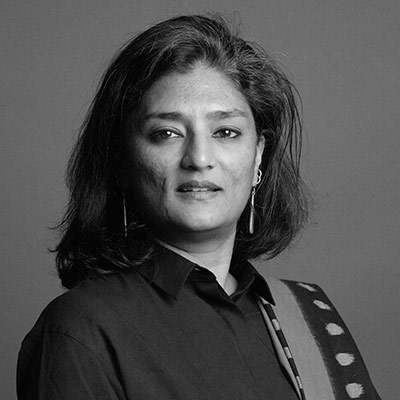
Kamya Ramachandran (US), Founder-Director of BeFantastic, spearheads pioneering initiatives at the intersection of technology, art, and societal impact. With a dynamic career spanning the UK, USA, India and currently Singapore, she orchestrates experiments in transdisciplinary pedagogy focusing on pressing issues like emerging technology on the one hand and climate change on the other. She helms this nascent field for South and South East Asia with deep experience in strategic curation and thoughtful execution of programs including Fellowships and a marquee Festival series in Bangalore India.
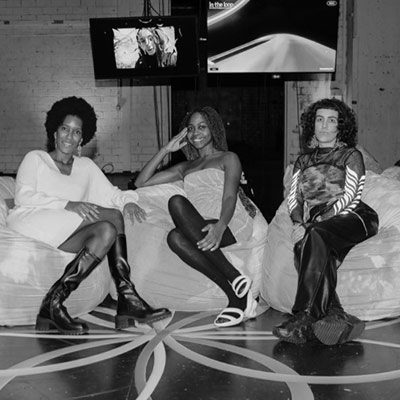
Dreaming Beyond AI (INT) (DBAI) is a collective and platform that critically explores the intersections of technology, marginalization, and imagination. Using AI as a portal, DBAI curates visionary fiction, speculative art, and community-driven discourse to challenge dominant narratives and center feminist, decolonial, and care-driven perspectives. The core team consists of Sarah Diedro Jordão, Iyo Bisseck and Nushin Yazdani. DBAI was created in collaboration with ifa – Institut für Auslandsbeziehungen. Shaped by artists, researchers, writers, activists, designers, scientists, and community organizers, DBAI examines the social impact of technologies. Through two residencies, it investigates AI’s influence on temporality and our experience of time while fostering artist-activist coalition-building. Influenced by feminist thinkers and movements, DBAI seeks to de-center technology, reimagine futures, and cultivate experimental spaces for resistance, solidarity, and radical possibility.
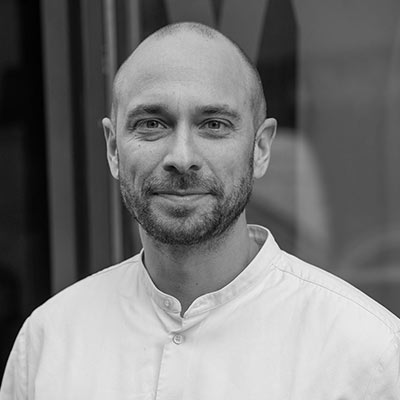
Christian Rauch (DE) is the director of Berlin Science Week, one of Europe’s largest science festivals, and the founder of the art-science initiative STATE. As a Ph.D. physicist and an expert in innovative collaborations between science, art, and society, he advises companies, research institutions, foundations, and the public sector on transformation processes. He is a lecturer at the European Center for Executive Education and a Responsible Leader at the BMW Foundation.
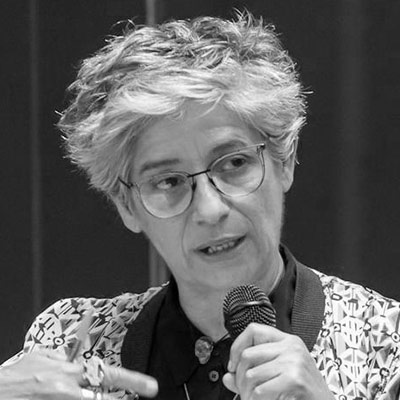
Tere Badia (ES) is an art historian and cultural strategist with an MA in Information and Knowledge Society from the IN3 (Internet Interdisciplinary Institute) at the UOC. With a career spanning analytical research, policy development, cultural management and curation and cross-sectoral collaboration, she specialises in the intersection of art, science, technology, networks and cultural rights. She directed Hangar (Barcelona’s centre for artistic production and research) and served as Secretary-General of Culture Action Europe in Brussels, contributing to cultural policies at a European level. She is now leading HacTe—Barcelona’s Hub of Art, Science, and Technology— to promote experimentation and knowledge creation at the intersection of these fields.
A Spark of Light in the Darkness
Statement of the STARTS Prize’25 Jury
Francesca Bria, Veronica D’Souza, Thomas Gegenhuber, Irini Papadimitriou, Asako Tomura
While considering this year’s STARTS prize entries, being aware of the fact that the spirit of the competition is to support and champion work that brings together much needed exchange between science, technology, and the arts, while also addressing urgent societal challenges, we can’t help but remind ourselves that this selection process comes at particularly shaky times.
Today’s reality is that not only do we continue to face socioeconomic, geopolitical, ecological, and technological challenges, we are witnessing a wave of global political disruption, ongoing conflict, and a deepening ecological crisis. Progressing to times of growing economic turmoil and inequality, climate catastrophe, and threats of nuclear war, while unregulated tech and blind faith in AI endure, the need for research and work that open up new narratives and help us re-focus, is bigger than ever. Similarly, the importance of the STARTS initiative, encouraging and advocating for such work cannot be underestimated.
In the midst of a political turn that looks to blow up the world order and democracy, while disinformation campaigns undermine civic trust and cause dismay when reasoning is needed the most, in this year’s submissions the jury has found critical work and voices that can make a much needed difference, bring clarity and a spark of light in the darkness. In this context, we deem it necessary to highlight extraordinary critical and collaborative approaches that challenge and reframe our relationship to technology, society, culture, and nature; projects that not only address the urgent need to continue to act and build on space for resistance, diverse voices, and critical ideas, but work and initiatives that can actually open paths to environmental and community-driven innovation, social justice narratives, and care-based infrastructures.
In this year’s Honorary Mentions and Nominations we see best practice examples that significantly contribute to our understanding of the ethical, social, and political implications of techno-solutionism, the impacts of colonial and industrial extraction on communities and environments, or urgent issues of gender-based violence. But here we also have innovative work and approaches that show how digital infrastructures and AI can connect to ecological regeneration and coexistence; and how alternative digital futures and synergies between technology and ecology are indeed possible. In this selection, the jury also wants to emphasize collaborative practices and work that make abstract scientific concepts tangible, and projects that show how technology and AI can come to the service of truth-telling, care-based data ethics, and therapeutic practices.
While we are still grappling with the impact of technologies such as AI as it continues to shape our society, reality, and imagination, we are witnessing the emergence and spread of quantum technologies that are poised to radically reshape computing, communication, and our philosophical understanding of the world. Without access to education, cultural interpretations, and debates in this emerging field, knowledge and control will remain in the hands of a few specialists creating further gaps in technological literacy, powerful knowledge, and skills essential to understand the opportunities, but also implications of this technology. Recognizing the importance of the work of LAS Art Foundation, engaging with the transformative implications of quantum mechanics and commissioning art that translates abstract quantum concepts into sensory, immersive experiences accessible to all, the jury awards this forward-thinking arts organization with the STARTS Grand Prize for Innovative Collaboration. LAS Art Foundation’s initiatives and work play a crucial role in democratizing abstract and complex scientific advancements such as quantum mechanics into experiences that people can see, feel, and reflect on. As quantum technologies shift from theory into practical application, LAS Art Foundation emphasizes the need for early cultural engagement, and in doing so, it not only enhances scientific literacy but also encourages inclusive participation in shaping the ethical and societal frameworks around emerging technologies.
Thinking back to the extremely precarious and challenging times we live in, and the urgent need for critical understanding and reflection on the relationship between technology and conflict, the jury awards unanimously the Grand Prize for Artistic Exploration to the AI War Cloud Database. An essential project integrating artistic research, open-source intelligence, and critical analysis of AI systems in military applications that deserves recognition for its critical role in illuminating the hidden entanglements between commercial AI tools and the machinery of modern warfare. The AI War Cloud Database plays a great role in shaping public debate when it comes to such a critical topic. When artificial intelligence is increasingly embedded in everyday life, this project dares to confront the ethical and political implications of this integration and in particular the devastating human cost borne disproportionately by vulnerable populations.
If AI War Cloud Database shows us where we have been led by a sector dominated by obfuscation, proprietary secrecy, and techno-solutionist hype, it also forces us to think where we want to go next and what choices we make as users, developers, and investors of AI systems.
Grand Prize: Innovative Collaboration
Awarded for the innovative collaboration between industry or technology and the arts (and the cultural and creative sectors in general) that opens new pathways for innovation.
Sensing Quantum
LAS Art Foundation
As Europe steps up investments in quantum technologies, from the Quantum Flagship and EuroHPC to key industrial initiatives in chips and cloud computing, Sensing Quantum reminds us of something essential: technological sovereignty is not just about hardware, speed, or scale. It’s also about how we imagine and shape the future together.
Curated by the LAS Art Foundation, Sensing Quantum opens up the complex world of quantum science to society at large. It is a powerful example of how art and culture can make emerging technologies more transparent, more democratic, and more human. While Europe builds the physical and digital infrastructure of the future—AI factories, quantum labs, supercomputers—this program offers a vital addition. It transforms critical technologies, and abstract concepts into stories, complex systems into emotions, and scientific infrastructure into shared experience.
At the heart of this program is We Felt a Star Dying, a poetic video installation by Laure Prouvost. Created in dialogue with quantum physicists and AI systems trained on quantum data, the work translates the death of a star into a powerful meditation on fragility, impermanence, and our deep interconnections. It shows that quantum ideas, like uncertainty, entanglement, and superposition, are not just scientific theories, but metaphors that help us understand today’s global, digital, and ecological challenges.
In a time of mega-infrastructures—from data centres to quantum sensing networks—Europe must ensure that these systems serve the public good, are ethically grounded, and open to democratic participation. Sensing Quantum makes this vision tangible. It invites artists, scientists, and citizens to explore new ways of thinking about our technological future, not as passive users, but as active co-creators.
The jury celebrates Sensing Quantum as a bold model of cultural-scientific collaboration. It reflects a Europe that leads in innovation, while staying rooted in democratic values and planetary care. This program ensures that public understanding and aesthetic experimentation evolve in tandem. It is not enough to sense the quantum, we must also sense the political, emotional, and planetary implications of what we are building. This work allows us to do both.
Grand Prize: Artistic Exploration
Awarded for artistic exploration and art works where appropriation by the arts has a strong potential to influence or alter the use, deployment, or perception of technology.
AI War Cloud Database
Sarah Ciston
As Artificial Intelligence becomes central to both everyday life and modern warfare, AI War Cloud Database by Sarah Ciston offers a vital and timely investigation into how these systems operate, and the consequences they carry. The work reveals how the same machine learning tools that power recommendation engines, chatbots, and predictive algorithms are also used in military decision-making, raising urgent questions about accountability, transparency, and responsibility.
Focusing on real-world systems like Palantir’s MetaConstellation and Israel’s Lavender, AI War Cloud Database shows how vast amounts of data are processed to make life-and-death decisions at speed. It highlights how these technologies are often tested on vulnerable populations in conflict zones, before being deployed domestically on the very citizens whose countries built them.
By tracing the links between commercial AI and military infrastructure, Ciston exposes a hidden feedback loop—where tools of convenience become tools of control. At a time of growing geopolitical tensions, AI arms races, and rearmament efforts across Europe and globally, this work underscores the need for democratic oversight, ethical governance, and civic awareness in shaping our technological future.
Still in the early stages of development, AI War Cloud Database is a research-driven artistic project with exceptional promise. The jury recognizes its contribution to a rapidly evolving debate on the societal and political stakes of AI. It encourages further collaboration, deeper investigation, and broader public engagement moving forward. In the spirit of the STARTS Prize, this work exemplifies the power of art and research to illuminate complex systems—and to invite us all to take part in shaping them.
Honorary Mentions
Brain Processing Unit –
The Future Where Biology and Computer Integrate
SoftBank, Daito Manabe, The University of Tokyo – Special Exhibition
Beyond classical computing, which values logical optimization and reproducibility, and even beyond rapidly advancing quantum computing, this project explores a new frontier of creativity using the Brain Processing Unit (BPU)—a biological processor made from lab-grown brain organoids. Led by artist Daito Manabe with the University of Tokyo and SoftBank, this industry–academia–art initiative explores the roots of human creativity by introducing music and rhythm into interactions with the BPU. Particularly interesting is that, as living tissue, organoids can show fatigue or errors—responses that, as well, may challenge conventional notions of correctness and suggest alternative, possibly evolutionary, forms of intelligence. By posing essential, uncompromising questions, the artist productively disrupts the conventional research process, opening new directions and accelerating discovery. This project is a powerful example of how artist-led contributions to fundamental research can expand emerging technologies and inspire new societal visions.
Breathing Architecture
Filippo Nassetti
We live in an age of hyper-specialization. Take the medical field, for example: making meaningful progress often requires years of rigorous training and deep immersion in a specific area of expertise. Researchers must master what has come before in order to build upon it—to find better ways to understand, treat, or cure disease. And as knowledge continues to expand, specialization deepens further. Yet innovation—the act of creating something both novel and valuable—often demands a shift in perspective. It calls for a willingness to cross disciplinary boundaries and to invite in unfamiliar ways of thinking. Breathing Architecture embodies this shift. It shows how collaborations between scientists and artists can create fertile ground for analogical thinking—the kind of thinking that bridges ideas across seemingly unrelated domains. In this case, imagination met inquiry, and new therapeutic possibilities began to emerge.
Coexist
Emergence Delft
When you talk to people who start to dive into quantum technology, you often hear: “The more I learn about it, the less I understand.” What is clear: We need to embark on a journey to enhance our understanding, because one thing is clear: This technology is highly relevant and can be highly disruptive, for instance, if quantum computing can offer a computing power that can dwarf the power of supercomputers for certain problems. There are many things to appreciate about the Coexist project. It fosters a unique cooperation that brings together bright minds from universities, the arts, and ecosystem partners — not only to explore and challenge one another but also to deepen our understanding of this new technology. One outcome of the collaboration is this installation. The jury applauds the collaboration and the efforts to make the abstract concepts of quantum technologies more tangible for a broader audience.
Computational Compost
Marina Otero Verzier and Donostia International Physics Center / Prototype
Locument (Francisco Lobo, Romea Muryń, Marina Otero Verzier) / Film
Computational Compost reimagines digital infrastructure as a life-generating system, turning the waste heat from high-performance computing into energy for vermicomposting. It is a bold response to Europe’s urgent need for sustainable, sovereign, and ecologically grounded technologies. This real-world prototype, embedded in an active data centre, merges advanced physics with regenerative design. It challenges the extractive logic of today’s digital systems and offers a new model: computation that is materially aware, ecologically integrated, and democratically governed. The project aligns powerfully with the European Green Deal, the Digital Decade, and the EuroStack vision showing that climate goals, democratic data governance, and technological innovation can—and must—go hand in hand. From its use of indigenous knowledge systems like the quipu, to its architectural vision of post-extractivist infrastructure, Computational Compost offers a poetic yet practical roadmap for a digital future rooted in planetary care.
Coral Sonic Resilience
Marco Barotti
Some of our planet’s most valuable ecosystems, coral reefs, are vital for providing shelter for thousands of marine species, but also for protecting coastal communities from erosion and storms, while being sources for medicine, food, as well as supporting businesses as spaces for recreational activities. As is the case though with other marine ecosystems, coral reefs are disappearing at an alarming rate, being threatened by both natural factors and human activity. Can art and science collaborations enable innovative ways to not only address these urgent issues, but also to provide creative solutions to restore these diverse and important ecosystems? The jury thought so when it comes to Coral Sonic Resilience, a brilliant example of art and science joining forces to repair and revitalize damaged coral reefs. Coral Sonic Resilience uses 3D printing, solar power, and soundscapes from vibrant coral reefs that help attract marine life to declined colonies. But more importantly, the underwater 3D-printed sound sculptures, created as part of this project, are installed as part of a coral reef restoration project in the Maldives, providing a new habitat to marine life, while also reviving threatened coral reefs.
Data Against Feminicide:
AI tools, transnational community, and data activism
Isadora Cruxên, Catherine D’Ignazio, Silvana Fumega, Helena Suárez Val
While data shapes our institutions and decisions, gender-based violence remains tragically underreported, misclassified, or ignored. Data Against Feminicide responds to this silence with care and urgency. Founded by Isadora Cruxên, Catherine D’Ignazio, Silvana Fumega, and Helena Suárez Val, the project supports activists who transform missing statistics into feminist counterdata—naming lives erased by institutional neglect. Through ethical tools, shared standards, and global collaboration, it creates a network where stories, not just numbers, matter. Bridging civic tech, activism, and memory, the project reclaims data not as extraction, but as connection—a way to mourn, to resist, and to insist that every life counts.
Kataula
Ana Mikadze
The most consumed resource on the planet and the most widely used human-made material, cement is found everywhere we turn; roads, ports, buildings, floors, the list goes on. But while being a resource we relentlessly consume, cement also has a huge impact as one of the biggest CO2 emitters, as well as causing significant environmental destruction in its production process, devastating landscapes, but also communities. It is one such story of environmental and human destruction that Kataula is very eloquently trying to tell. Kavtiskhevi village and a site of limestone quarries in Georgia has been transformed by decades of mining and extraction. Heidelberg Cement, a large multinational German company, and the world’s second largest cement producer, has been central to Kavtiskhevi’s destruction, while attempting to manipulate the narrative by positioning itself as a sustainable company. Kataula repurposes cement and quarry waste, creating artefacts that present the life and environment erased by extractivism, while telling stories Heidelberg Cement tries to suppress.
Seeing Echoes in the Mind of a Whale
Marshmallow Laser Feast
While oceans and marine ecosystems are crucial for our survival, human activities including overfishing, shipping, extractivism, and pollution, are heavily affecting the health and biodiversity of these important environments that we mostly perceive as endless resources to be exploited. And despite our significant dependence and connection with the ocean, we often ignore or feel disconnected from the life and creatures that inhabit this world that is so intertwined with ours. Some of these creatures, cetaceans, apart from their important role in reducing CO2 amounts in our atmosphere and acting as indicators of the health of our oceans, are complex, highly intelligent creatures with great cognitive skills.
Seeing Echoes in the Mind of the Whale is a beautiful, immersive experience taking us into a journey alongside three cetacean species: a humpback whale, a bottlenose dolphin, and a sperm whale. In an attempt to bring us closer to these extraordinary animals, while also urging us to reflect on how our activities impact their lives and environment, the project bridges scientific research, marine biology, and storytelling, and with the use of real-time computing, marine data, and recordings that result in stunning visualizations responding to acoustic data in real-time, allows humans, in accessible, engaging ways, to experience underwater worlds through the eyes and perspective of these amazing creatures, whose very existence is threatened by our actions.
Synthetic Memories
Domestic Data Streamers
In the 1995 film Ghost in the Shell, the fully cyborg protagonist reflects: “There are countless ingredients that make up the human body and mind, like all the components that make up me as an individual with my own personality.” Memory, the physical body, a sense of the future, and connections to vast networks of information—all shape our identity. Synthetic Memories is a sincere and compassionate initiative that seeks to preserve personal identity and dignity when memory is at risk—due to dementia or other unfortunate life events. Using interviews and contextual data, AI helps reconstruct individualized narratives, enabling people to reconnect with their past. This fosters emotional well-being and restores a sense of self. By addressing the often-overlooked realm of mental and emotional health, the team at Domestic Data Streamers highlights a vital dimension of what it means to be human. Already implemented in public services, their work shows how design and technology can collectively serve the common good—offering scalable models for collaboration and the nurturing of meaningful global communities.
The Nebelivka Hypothesis
Forensic Architecture, David Wengrow
Although cities are often seen as monuments to power, hierarchy, and extraction, ancient sites like Nebelivka suggest another beginning. Hidden beneath the fertile black soils of Ukraine, this 6,000-year-old settlement reveals a vast, organized society—yet with no palaces, temples, or ruling elites. In collaboration with archaeologist David Wengrow, Forensic Architecture explores this forgotten urbanism through soil analysis, agent-based models, and spatial reconstruction. The Nebelivka Hypothesis invites us to rethink what a city is and could be: not a center of domination, but a site of cooperation, shared life, and ecological balance. Bridging archaeology, technology, and storytelling, the project opens a space where ancient futures re-emerge.
